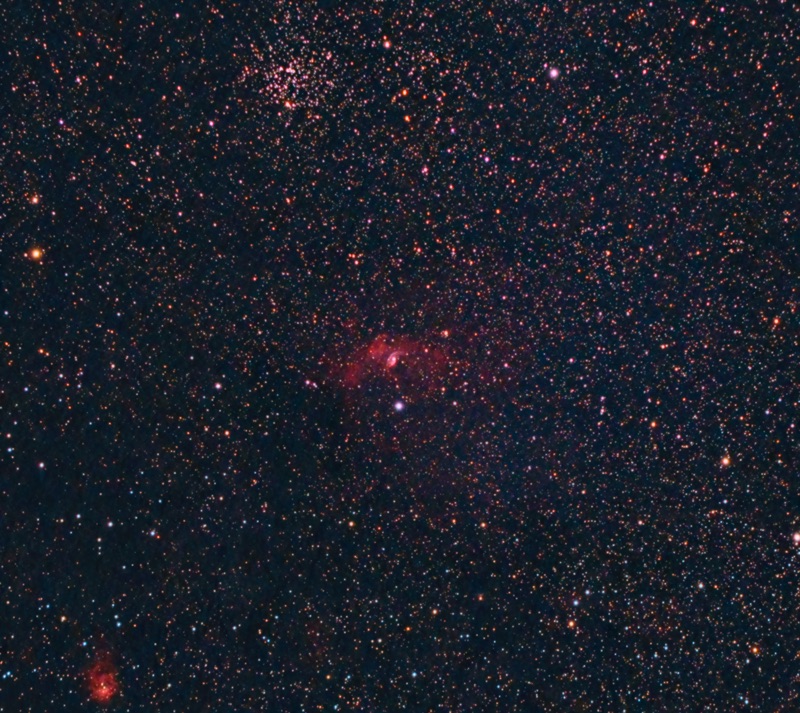Bubble Nebula , M52 and NGC 7538
Cataloged as NGC 7635, it is also known simply as The Bubble Nebula (center). Although it looks delicate, the 10 light-year diameter bubble offers evidence of violent processes at work. Above and right of the Bubble's center is a hot, O-type star, several 100,000 times more luminous and approximately 45 times more massive than the Sun. A fierce stellar wind and intense radiation from that star has blasted out the structure of glowing gas against denser material in a surrounding molecular cloud. The intriguing Bubble Nebula lies a mere 11,000 light-years away toward the boastful constellation Cassiopeia.
M52 (Upper Center) is an open cluster discovered by Charles Messier in 1774. It appears as a fine rich compressed cluster containing about 200 stars. The clusters brightest stars are yellow giants, but it also contains many blue-white class B main sequence stars.
It is located about 9,100 light years away from earth. It is home to the biggest yet discovered protostar which is about 300 times the size of our Solar System. It is located in the Perseus Spiral Arm of the Milky Way and is probably part of the Cassiopeia OB2 complex. It is a region of active star formation including several luminous near-IR and far-IR sources.
Imaging Data
Date: 8-26-2010
Location : Sudbury, Massachusetts
Optics : televue 85 Apochromatic Refractor F5.6
Filter(s) : None
Mount : Great Polaris Mount
Autoguiding : None
Camera : Canon EOS 1000D Astro-modified
Exposure info : 30 x 25 second Exposures @ISO 1600
Total Exposure : 12.5 minutes


